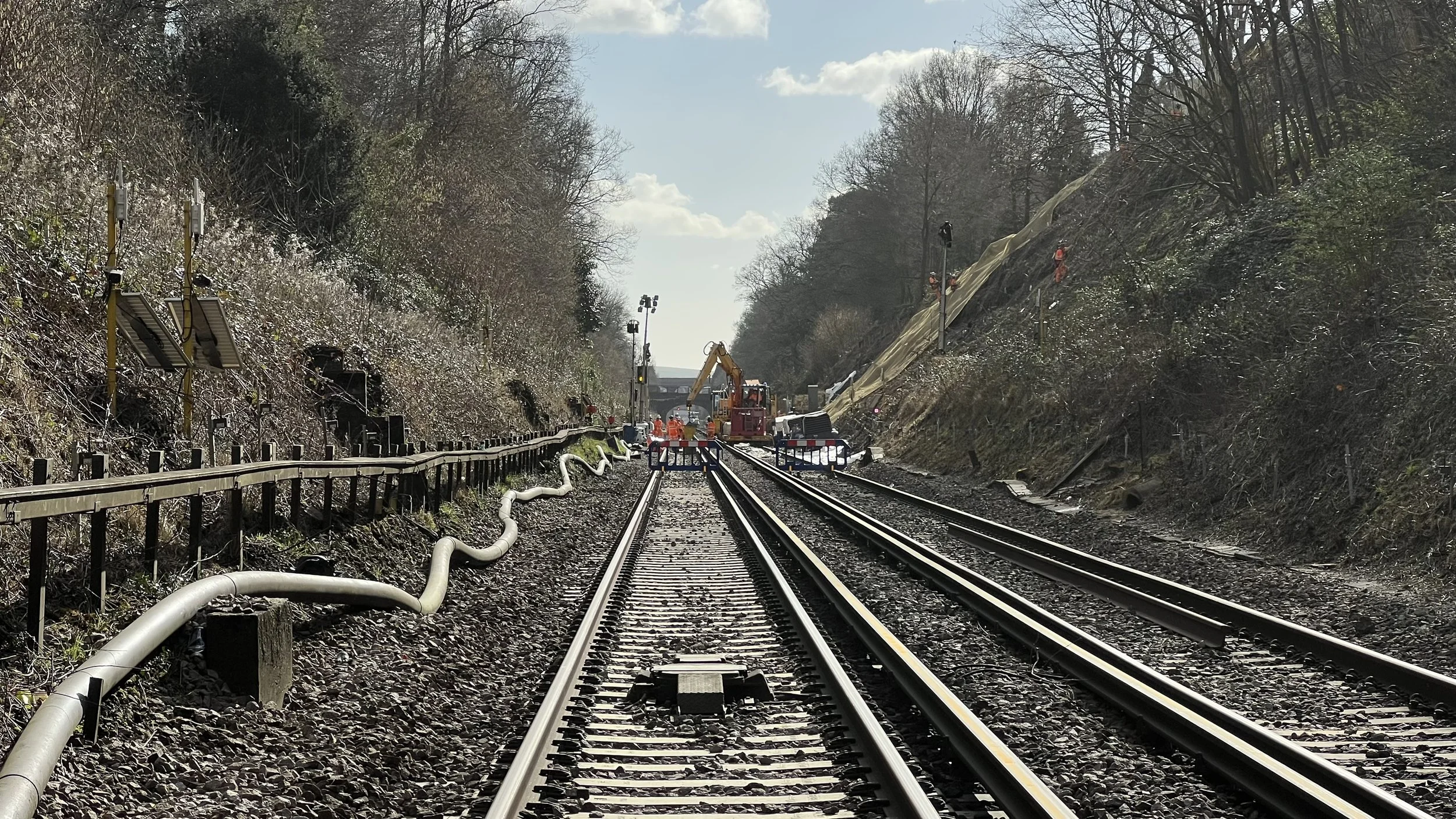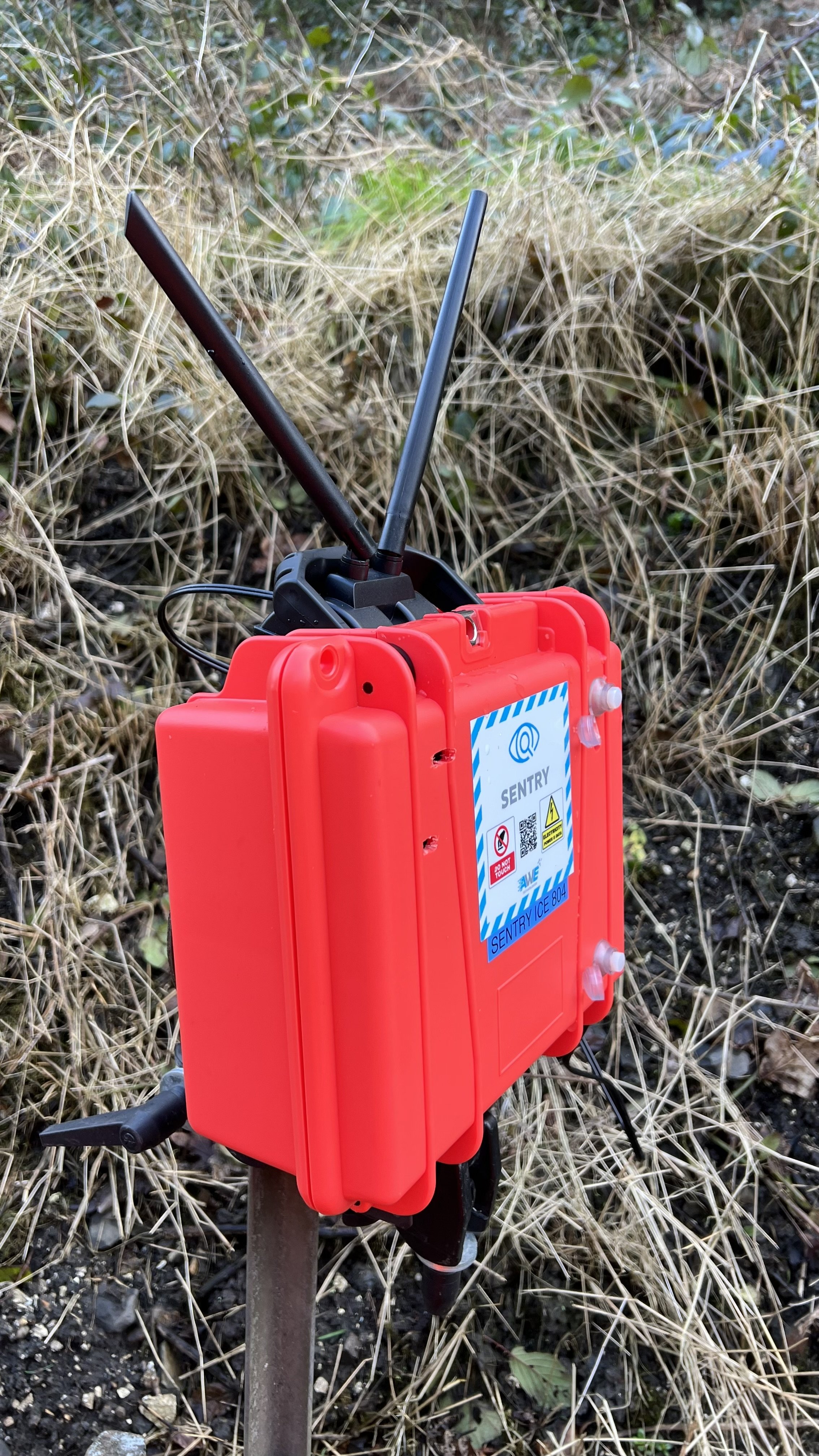Project Overview
Network Rail commissioned the Haywards Heath project to conduct essential geotechnical works over two weeks. The primary objectives were to clear dense vegetation from the railway cutting and stabilise the embankment to prevent soil movement, which could disrupt railway operations and potentially threaten nearby homes. This involved vegetation clearance and implementing pinning and sheeting on the cutting to reduce landslip risk, ensuring safety for both the railway line and adjacent residential properties.
Challenges Encountered
Dense Vegetation and Cutting Instability: The cutting had become heavily overgrown, with branches encroaching dangerously close to the railway. Signs of embankment instability increased the risk of collapse, which would not only disrupt railway operations but also endanger nearby residential properties. A landslip could result in soil spilling onto the railway line or into the gardens of nearby homes, raising significant safety concerns for residents.
Environmental and Safety Considerations: Due to the cutting’s proximity to residential areas, safety and environmental impacts were critical concerns. The team needed to prevent any potential slope collapse from encroaching on local gardens and homes, and the work had to meet strict environmental guidelines, particularly with regard to noise, to minimise disruption to residents.
Noise Restrictions and Environmental Health Officer (EHO) Standards: Scheduled for Easter to reduce commuter disruption, the project had to manage noise carefully, as many residents would likely be at home. The local EHO imposed a stringent noise limit of 60dBA Leq after 11 PM, so restrictive that even simple on-site conversations could breach it. This created a significant challenge in completing the works efficiently.
Solutions Implemented
Vegetation Clearance and Embankment Reinforcement: The project team carefully cleared the overgrown vegetation, allowing access to the cutting. Once accessible, they stabilised the embankment using pinning and sheeting to reinforce the slope, mitigating the risk of landslip. This approach ensured the railway line and surrounding residential areas remained secure.
Collaborative Efforts with Local Authorities: AWE collaborated closely with the local EHO to set realistic noise limits, presenting a case for manageable noise thresholds that still protected residents' comfort. This proactive negotiation allowed the project to proceed within revised noise guidelines, balancing efficiency with local regulations.
Innovative Noise Monitoring Using Sentry Cameras: To adhere to noise regulations, AWE deployed Sentry Cameras on the opposite side of the railway, positioned halfway between the cutting and the residential properties. This setup enabled real-time noise monitoring, capturing data at property boundaries and allowing site management to receive alerts if levels approached the threshold. This setup not only maintained compliance but also minimised disturbances for local residents, ensuring the project could continue without delays.
Results and Key Takeaways
Successful Project Completion: The project achieved its objectives within the planned two-week period. The cutting was stabilised effectively, with the reinforced embankment significantly reducing the risk of landslip, ensuring safety for the railway line and nearby homes.
Efficient Noise Management: Through effective negotiation and the use of advanced noise monitoring technology, AWE adhered to noise regulations while maintaining efficient workflows. The Sentry Cameras allowed the team to manage noise proactively, providing a model for balancing regulatory requirements with operational efficiency on future projects.
Collaboration and Proactive Problem-Solving: This project underscored the importance of collaboration among contractors, local authorities, and environmental health officers. By engaging in proactive problem-solving and advocating for achievable standards, AWE successfully implemented practical solutions that benefitted all stakeholders.
The Haywards Heath project exemplifies the value of careful planning, negotiation, and innovative technology in managing complex geotechnical works in sensitive residential settings. This case study demonstrates how projects in proximity to communities can achieve safety, compliance, and efficiency, setting a strong example for future infrastructure projects where environmental and public safety concerns are critical.


